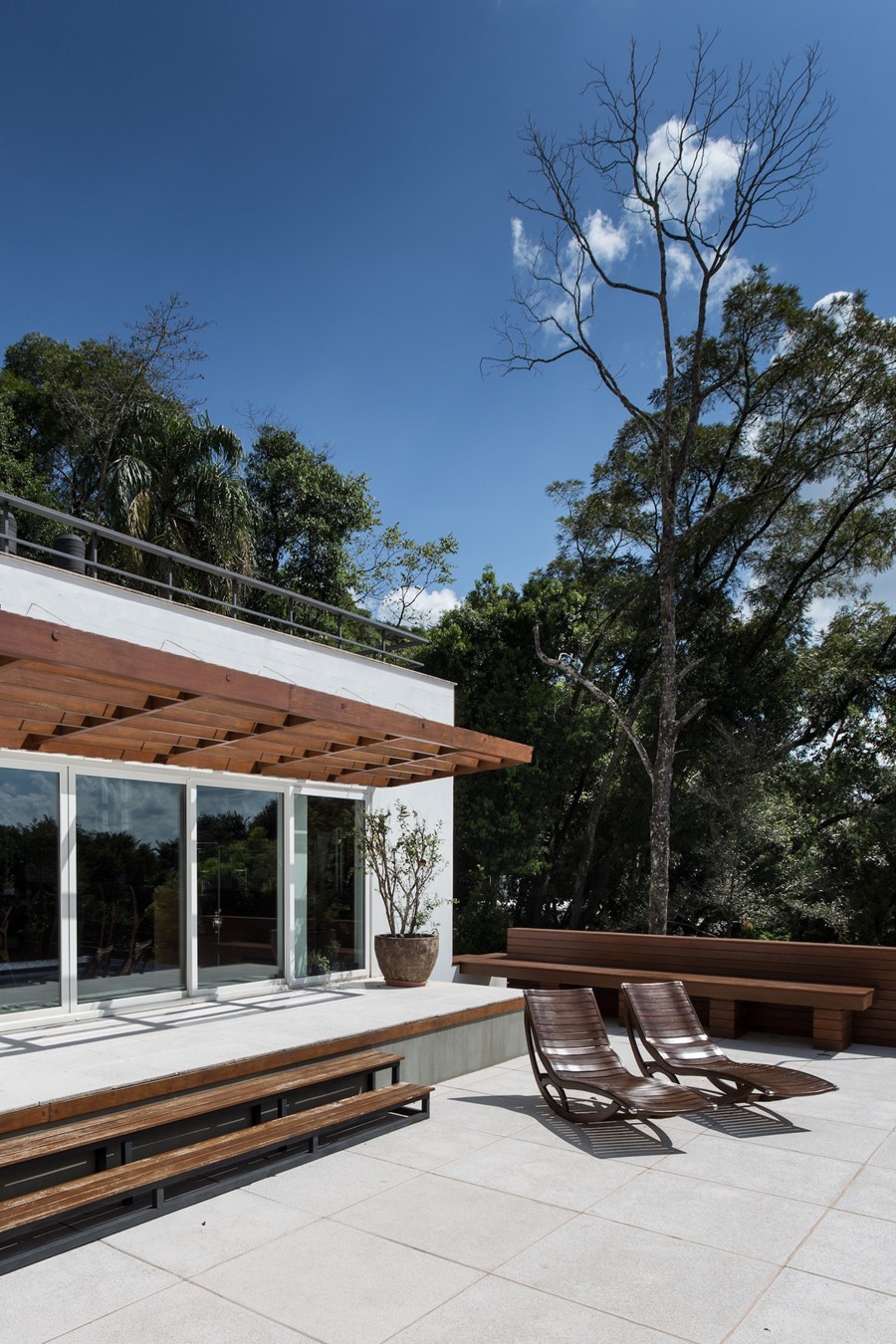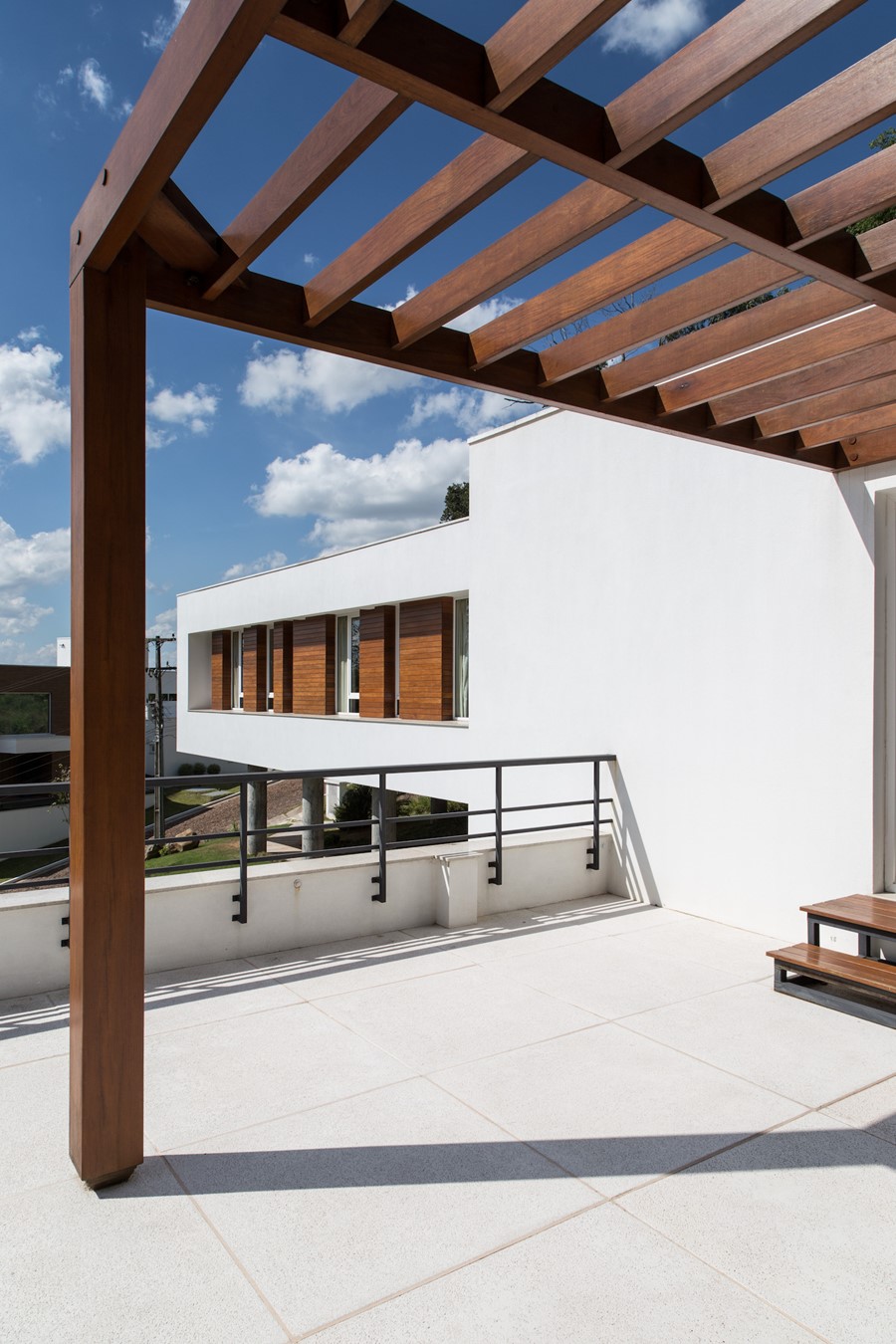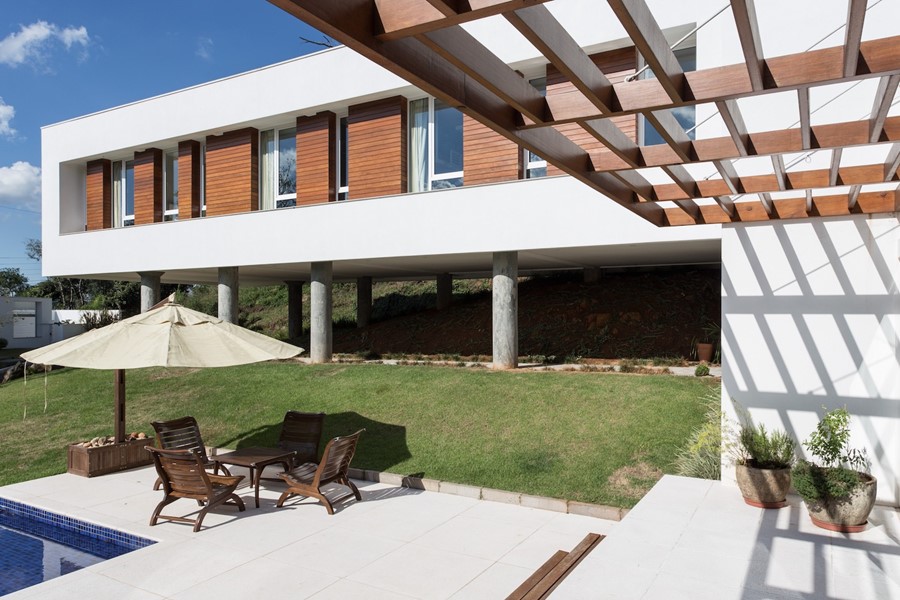House 4.16.3 is a project designed by Luciano Lerner Basso and is located in the city of Erechim, in the countryside of Rio Grande do Sul, brazilian state, around 400 km from the state capital, Porto Alegre.




























The region has a subtropical climate, with warm, humid summers and chilly, rainy winters, which poses yet another challenge to the architect, in terms of habitability. Built on a terrain with a slope of twenty meters and several native plant species, the project sought to minimally alter the topography, proposing a building that lies on one of its highest parts and, from there on, develops sometimes accommodating itself on the natural profile and sometimes hovering over it.
The program was divided into two volumes: the first is 42 meters long and 8 meters wide, positioned parallel to the contour lines, holds services and the house’s intimate area. The second is one floor below and accommodates the social sector, connecting directly to the patio and the pool area. The two blocks form a “T”, just as the Prairie Houses of Frank Lloyd Wright and articulate through vertical circulation. Where the imaginary axes meet there is a double height ceiling that unites the volumes and allows the intimate area of the house to spatially take over the social area.
There are two accesses, one of daily use of the residents, which is through the garage and allows the house to be used as if it were one-story despite of the rugged topography, since the basic program is completely at the same level. The other access is at the lower level, through the living room with double height ceiling, and through it there is access to a promenade architecturale, which starts on the promenade, passes under the structural balance of 4.5 meters and develops through the pillars below the main volume.
On the slab of the lower volume there is a garden terrace, which can be accessed from the intimate living room, and next to the barbecue lounge there is another terrace, where the pool is located. From both the user is positioned at the same level of the treetops and this artificial floor takes the view as if the landscape were habitable.
The work is materialized through common construction techniques of the region: the structure is in reinforced concrete and the walls are ceramic brick masonry coated with cement and sand mortar plaster. The labor used was local and
in addition to the utmost respect for the natural terrain profile, the house has a rain water reuse systems; heating through solar energy; natural ventilation and lighting in every room; reduction of energy losses through double exterior walls with air chambers and also high performance double glazed window frames. Individual actions that together make a difference for the environment.
This residence was requested by a couple who were already friends before being clients, who also had children whom we watched grow. The design act took, more than ever, the nuances that guide the architect’s work, where technique is a mean for building human and sensitive spaces appropriate to the site.
Photography: Marcelo Donadussi



